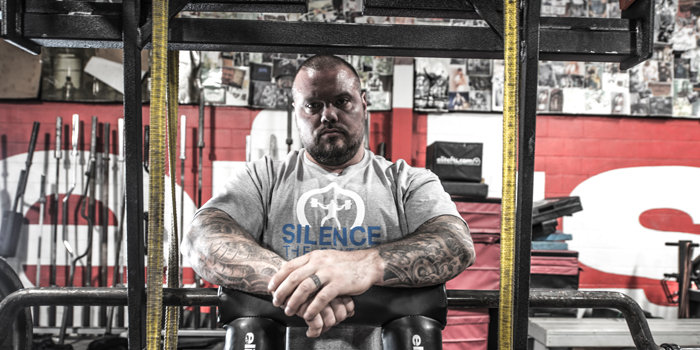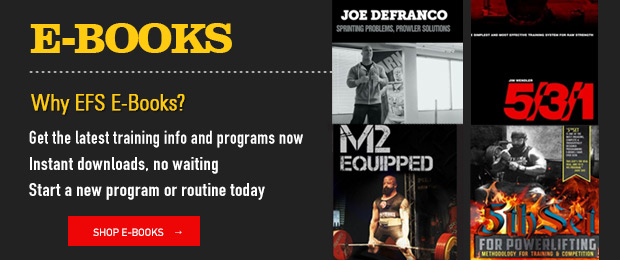
Over the last few years, I have had more time to visit some major universities and professional teams and watch and talk shop with some very good strength and conditioning coaches. Seeing this culture and atmosphere firsthand brings back great memories.
If you have followed me and know my story, my lifting career is on hold until I hopefully get my last surgery. I have taken a step back from training and have used more time learning with hands-on experiences.
Not taking away anything from the Internet or books, but being right there and doing hands-on work helps me a lot (a great deal) more.
RECENT: Here's How You Can Land a Collegiate Scholarship for Powerlifting
Some are fortunate enough to already be on a powerlifting team with a quality coach or are on or have been on a collegiate powerlifting team, chances are some of this you are doing or have seen this. But for the ones who haven’t, here are some of my takeaways.
Proper Warm-Up
There is a fine line. I do see some powerlifters making the warm-up extend for an hour long! This obviously isn’t necessary. However, the first thing every powerlifter should do more of is warm up properly! Huge difference.
The norm for most is to walk in, set their stuff down, and warm up with an empty bar, and add weight. Needless to say, this is not a good idea. (I have been guilty of this as well.)
Almost every strength and conditioning coach will spend 10 to 15 minutes minimum warming up the athletes. This will reduce the risk of injury, and for most, help prepare the body for heavy weights.
Whether they are putting the athletes through a dynamic warm-up, mobility drills, medicine ball movements, anaerobic movements, RPR, or other means, they are all doing something. Just like these high-level athletes, the powerlifter also needs to address the entire body as well as the body part they are training that day. This helps ensure a reduction of injuries.
Lonely Lifters
We all get it. You HATE everyone, and nobody gets you. Chances are that you are wrong. This trend, which I like to call the “lonely powerlifter,” needs to stop!
Describing this lifter as one who doesn’t communicate with others while they lift is wrong. Headphones on the entire lift and texting on the phone in-between every set are some things you will not find at any high-level collegiate or professional setting.
In fact, phones are not allowed and neither are headphones. Everyone is helping each other and motivating each other with one goal: getting better and stronger.
I know some gyms are different and have alarms if lifting gets too intense. Here is your solution if you are serious about training and want to become better: Find a gym or facility with like-minded people.
Almost every gym or facility has a daily or weekly pass you can purchase to see if it is a good fit for you. Almost every college or professional setting where high-level athletes are working under one roof will display this, and it is easy to find like-minded people because it’s part of the recruiting and drafting process.
Frankenstein Programs
For all major collegiate/professional settings, the athletes have a specially designed program that is followed to the T. Obviously, if there was an injury or issue with the athlete, the program might be tailored differently. You would never see the athletes hanging out after the training session doing extra unnecessary movements (burn out sets, etc.).
RELATED: Off-Season Conditioning Lanes
I can give you a personal example from when I was in college. After a grueling workout, a couple of defensive linemen and I thought it would be a good idea to perform some biceps curls (“curls for the girls”). When our strength and conditioning coach saw this, not only did he chew our asses out, he ran us more for punishment to get the message through that we were being knuckleheads. Everything we needed was in the workout, so doing extra was unnecessary. This, at the time, didn’t make sense, but it does now since I coach.
With powerlifters, I commonly see their program becoming a makeshift Frankenstein-like program that’s adding in and taking out stuff that they like or dislike. The problem with this is almost all the time.
What your coach prescribes will have something you might not like but definitely need to do to get better. With powerlifting, a lot of these additions and substitutions take away from the overall game plan of the coach.
Recovery
Another trend I see with a lot with powerlifters is applying too few recovery methods. You can only beat your body up so much before it will break down.
At most major collegiate and professional settings, you will see many forms of recovery, such as ice therapy tubs, hot tubs, floating chambers, massage therapists, body tempering devices, massage tools, foam rollers, etc. Adding extra small workouts (GPP) is another great way to keep the body healthy.
Most of the recovery for the athletes will be prescribed from the strength and conditioning coach or the trainers. Most local facility and gyms have some sort of tools to promote recovery from training sessions. It is up to the lifter to take the time and do them.
Unilateral Work
Sure, you can bench press 400 pounds and squat 500 pounds, but can you dumbbell press 200 pounds and lunge 250 pounds? I see a lot of powerlifters neglecting unilateral movements and mainly sticking with compound movements (squat, bench, deadlift, etc.).
Performing unilateral movements will help you work on any lagging issues and asymmetries you might have. Most everyone has a dominant or non-dominant issue that they can easily correct over time.
You will see a boatload of unilateral work being done in collegiate and professional settings. Obviously, in sports at these levels, one must work in all planes, and unilateral work is a great way to do this. I can remember doing a crapload of lunges and lunge variations (step-ups, step-downs, laterals, etc.) while in college and arena football as well.











2 Comments